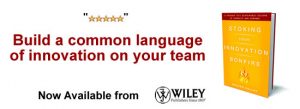How to Prevent the Digital Dark Ages

On January 24, 2018, during the 48th World Economic Forum Annual Meeting in Davos, Switzerland, business leaders from around the world convened to launch the formation of the Global Centre for Cybersecurity. The primary reason? To “prevent a digital dark age.†According to a press release on the event:
- Cyberattacks could cripple economies, nation states and society without collaboration and robust defenses
- Urgent action is needed to create safe operating environments for new technologies like artificial intelligence, robotics, drones, self-driving cars and the internet of things
- Forum’s new Global Centre for Cybersecurity offers the first platform for governments, companies and international organizations to diminish the impact of malicious activities on web
The aim of this new centre is to establish the world’s first platform for governments, businesses, experts and law enforcement officials and agencies to congregate and collaborate on cybersecurity challenges.
“If we want to prevent a digital dark age, we need to work harder to make sure the benefits and potential of the Fourth Industrial Revolution are secure and safe for society. The new Global Centre for Cybersecurity is designed as the first platform to tackle today’s cyber-risks in a truly global manner,†said Alois Zwinggi, Managing Director at the World Economic Forum and Head of the Global Centre for Cybersecurity.
So what exactly are these digital dark ages? And what types of threats precipitate the plunge into such a state? Lastly, how will we, as a society, mitigate these threats and secure our digital landscape?
Courting the Digital Dark Ages
The status quo is, unfortunately, somewhat dismal. In their attempt to show just how bad it is, the University of Illinois Chicago urges readers to “Just ask patients of Clay County Hospital. Last year, administrators of the small Illinois hospital received an email from a hacker who had hacked into their system, gained access to more than 12,000 patient records, and was now holding those records for ransom.â€
“This was hardly an isolated incident,†they continue. “The average person outside the health industry might be surprised to hear that healthcare organizations average one cyber attack per month. At least one in nine Americans have had their health records compromised in some way.â€
It’s not just healthcare that has people concerned. 77 percent of Americans are concerned about financial information being stolen or compromised, and the recent Equifax hack in 2017 also helps prove just how serious and widespread cybersecurity issues are.
The “digital dark ages†refer to a system where healthcare, financial — any industry connected to the internet and utilizing data — is always in peril and never fully safe to use. Imagine a world where smart cars can’t be trusted on the roads because they’re too easy to hack. Or where a bank could lose your digital dollar at any time. This is the type of world that we all need to keep from manifesting.
Existing Threats
Interestingly, research is finding that many of the problems associated with cybersecurity and data breaches come down to the fact that people are just ignorant or uneducated on the topic. For example, the amount of people that fall for credit card scams is such big business, that according to Cole Mayer with Fiscal Tiger, “file sharing and leaked data make up the bulk of what can be found [on the dark web], financial fraud makes up about 12 percent of these sites.â€
That’s huge! Other statistics show that small businesses are particularly at risk, simply because they don’t think they are. They haven’t evaluated all potential threats to their businesses, which, if you ask Stephen Robert Morse, writing for The Hartford’s SmallBiz Ahead, is the number one way to protect your business income. Of course, there’s no way to know every single existing threat out there, but you can definitely keep up on your knowledge and get a general feel for the landscape.
Part of the problem is that people just aren’t thinking critically about the technological environment they operate in every day. The biggest thing to realize now is that businesses and individuals are falling prey to cyberthieves and attackers because they aren’t doing things like installing updates, reading about the latest scams, etc. Human fallibility is still the number one threat to cyberinfrastructure.
The Future of Prevention
The good news is that there are multiple ways to shore up cybersecurity that involve changes in attitude, and even a solutions that deal with human error. On the side of human attitude and protocol, some have been promoting the “zero trust†model, which is based on the idea that employees often have access to far more than they need to do their jobs. By always knowing what device they are using, and that it’s actually them on your network, you can limit risk to exposure by limiting their trust. It’s “explicit†trust, in lieu of “implicit†trust.
On the other hand, some companies have been investing in technology such as A.I. and machine learning processes. This new type of cybersecurity constantly watches over a network, looking for the slightest of changes, and then notifying IT when there is one. This represents a brand new way to look at security of digital devices and files.
“To use the physical analogy, most businesses spend their time adding padlocks and door alarms to protect their sensitive data,†says Brian Beyer, CEO of Red Canary. “They earnestly hope that adding more tools and systems will make them better, but often times it just results in more false alarms going off. Industry stats show that only 5% of those alarms actually get investigated. We believe that cyber security needs to evolve: organizations need to be able to continuously surveil and hunt for threats and stop them quickly.â€
These are all the types of solutions that, hopefully, the Global Centre for Cybersecurity will bolster. Whether it’s new technology or a change in behavior, something will have to change to ensure the digital safety of the world we live in. While it might be hard to imagine what the digital dark ages might be like, it’s certain that if we don’t start investing in solutions soon, we’ll be engulfed by the unsecured infrastructure we currently rely so heavily on.
Wait! Before you go…
Choose how you want the latest innovation content delivered to you:
- Daily — RSS Feed — Email — Twitter — Facebook — Linkedin Today
- Weekly — Email Newsletter — Free Magazine — Linkedin Group
 Andrew Heikkila, a tech enthusiast, and writer from Boise, Idaho, and a frequent contributor to Innovation Excellence. He also writes for Tech Crunch. You can follow him @AndyO_TheHammer
Andrew Heikkila, a tech enthusiast, and writer from Boise, Idaho, and a frequent contributor to Innovation Excellence. He also writes for Tech Crunch. You can follow him @AndyO_TheHammer
NEVER MISS ANOTHER NEWSLETTER!
LATEST BLOGS
Starbucks and Big Tobacco
Back in the 1950’s smoking was glamorous, and just about everybody who was anybody smoked cigarettes. Then came the discovery, to the shock of millions, that sucking smoke into your lungs might not be good for you. Then came another revelation that one of the substances in tobacco, nicotine, which was used as a poison by the Egyptians during the times of the Great Pyramids, is addictive. People then began a mass exodus from the consumption of nicotine via inhaled smoke.
Read MoreWal-Mart Goes Green – What about your company?
With the price of gas above $3.00, some companies (and hopefully all) are beginning to look at the fuel efficiency of their fleets. Wal-Mart is the most public example of this with its trucking fleet. Its efforts include:
Read More




Dark web has full of scammers, you can’t trust anyone for anything. Lots of people already lost their money and savings. So I have tried to reveled those scammers. Please visit our YouTube channel and support us. Channel link:
https://www.youtube.com/watch?v=QSWJiiIgQ8c
https://www.youtube.com/watch?v=kIQvUUZLgLk